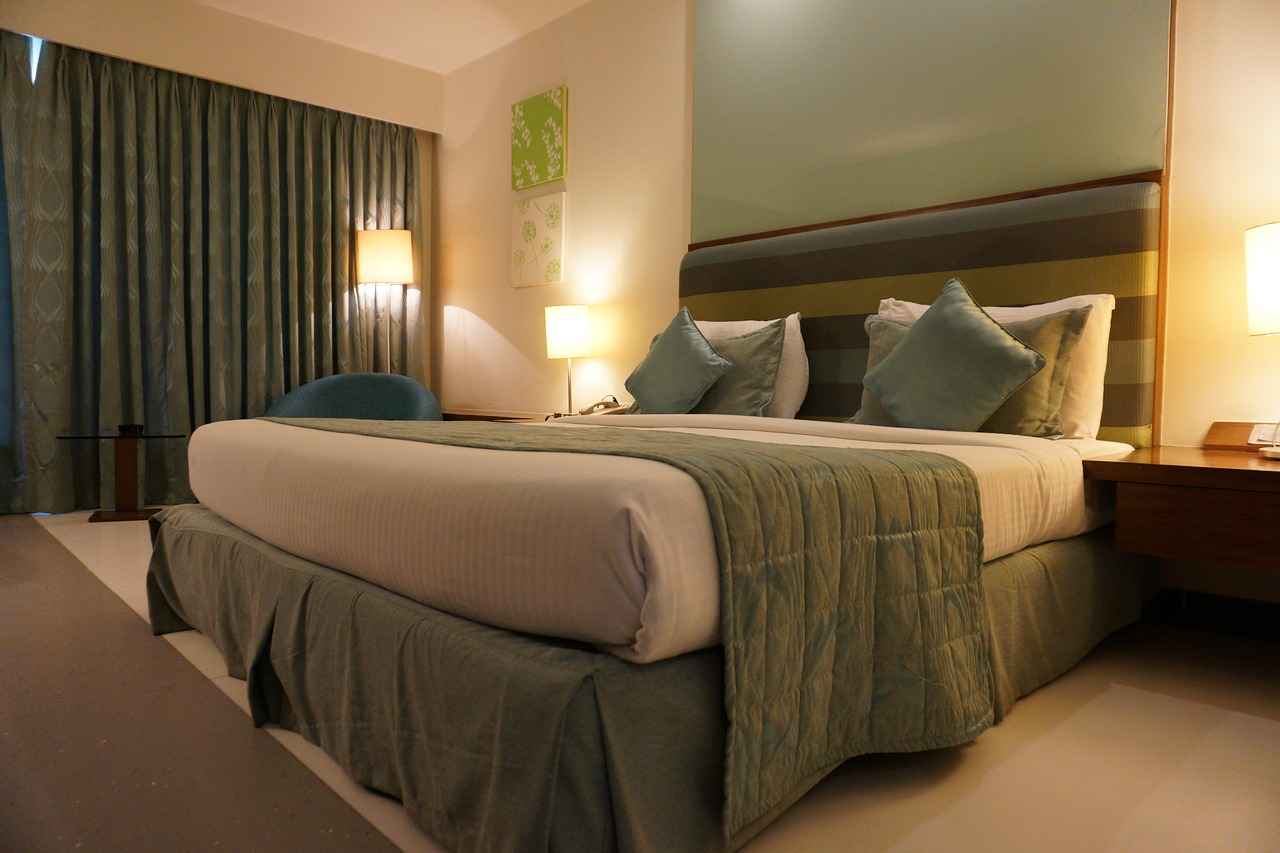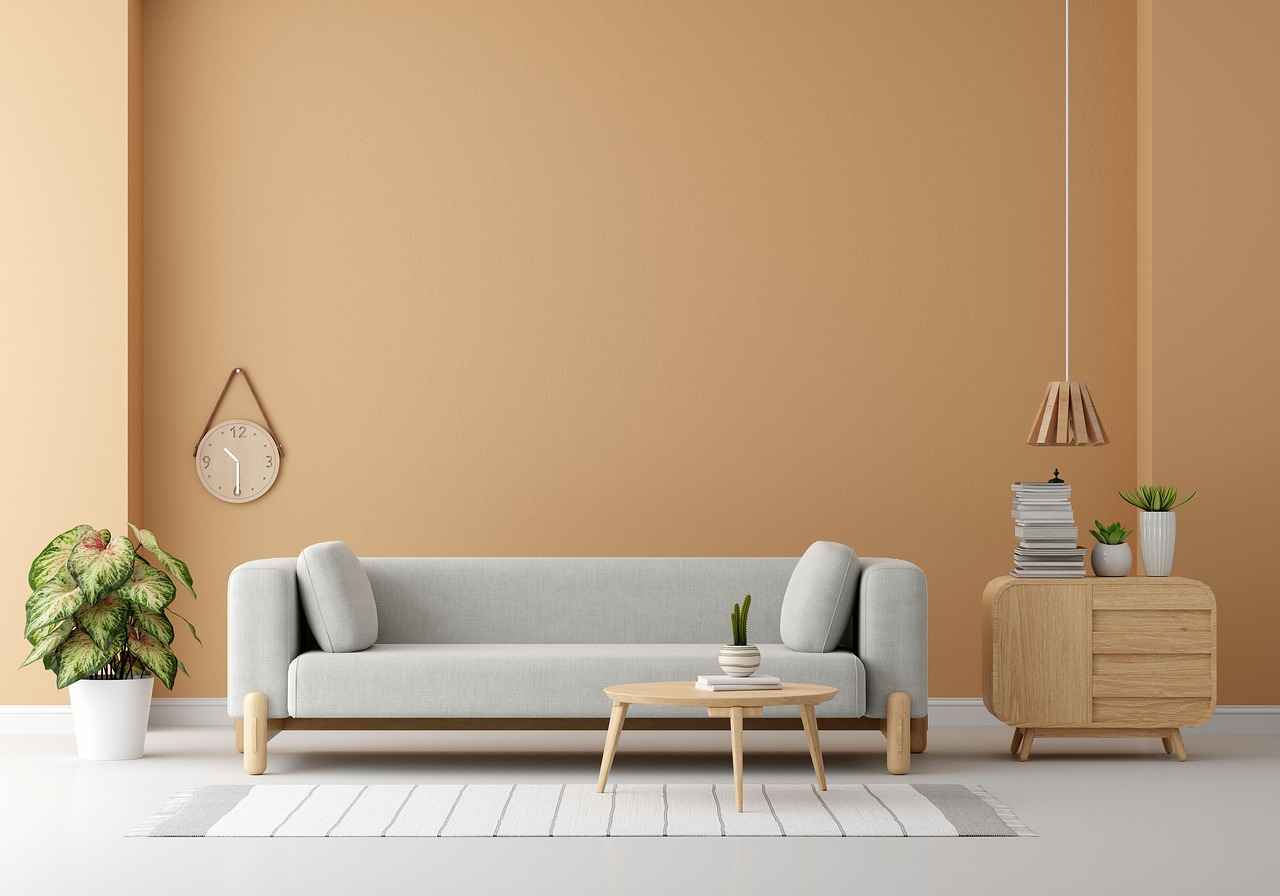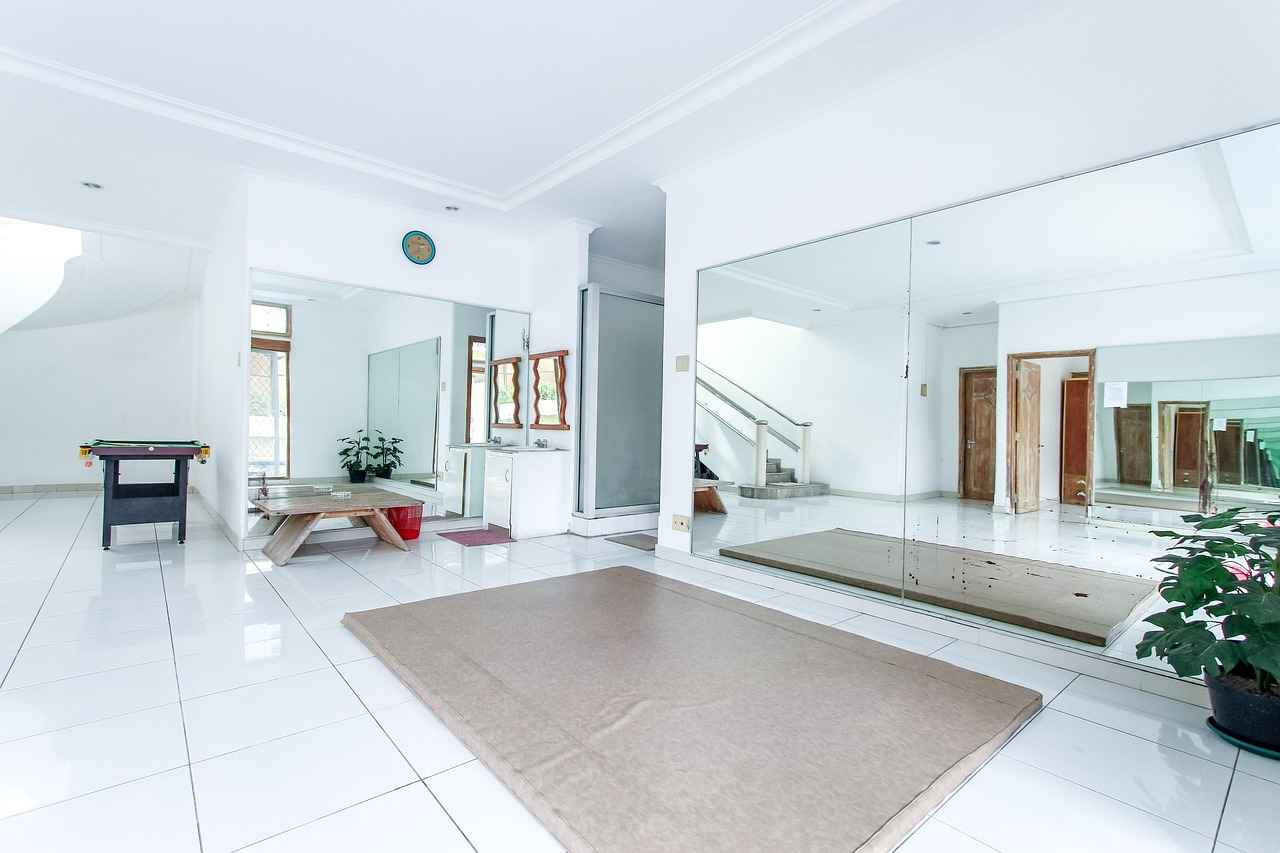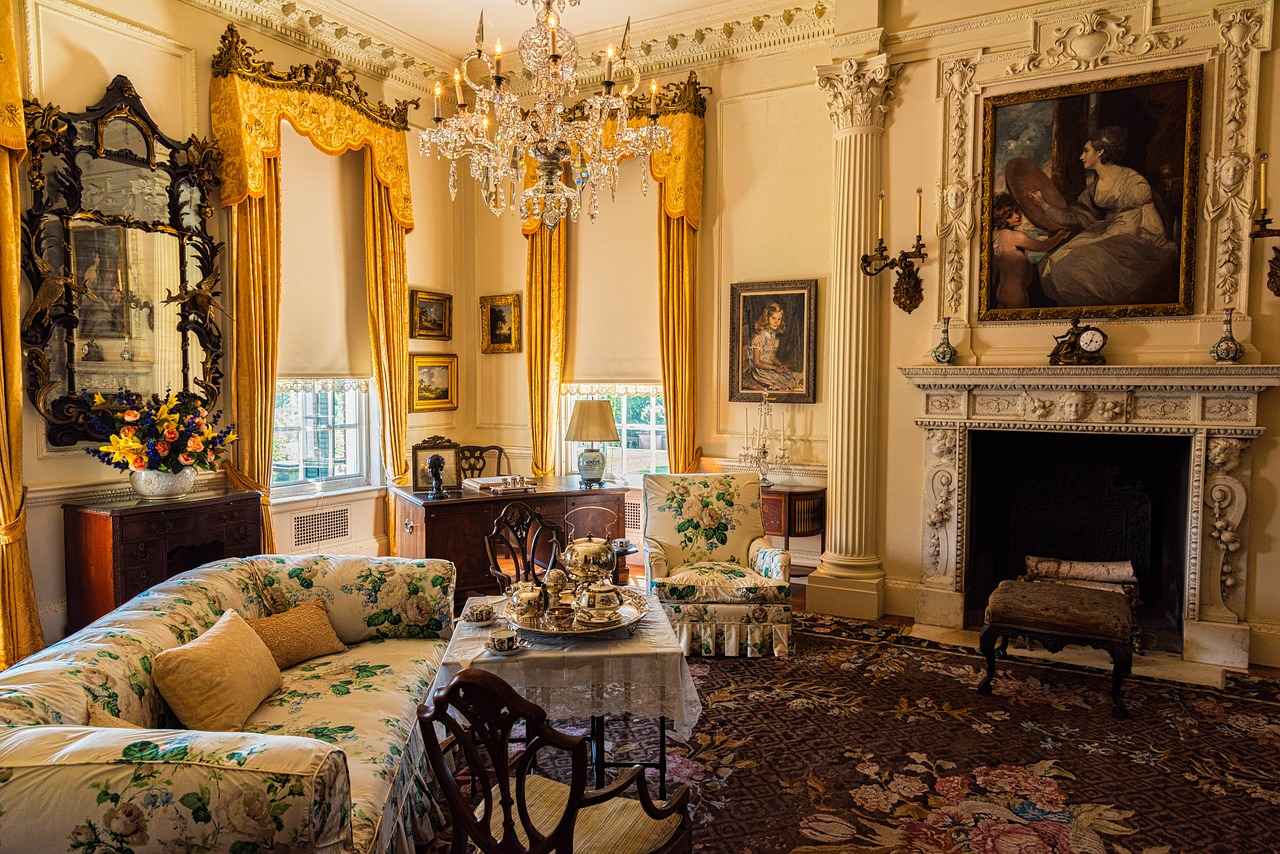This article explores the best room dividers suitable for apartments, focusing on options that enhance privacy and style. Discover top picks, features, and tips for selecting the right divider for your space.
What Are Room Dividers and Why Use Them?
Room dividers are versatile furnishings that create separate spaces within a room. They enhance privacy, improve aesthetics, and are ideal for small apartments where maximizing space is crucial. By using room dividers, you can transform a single room into multiple functional areas, making your living space more efficient.
Top 7 Room Dividers for Privacy in Apartments
- Folding Screens: These are classic dividers that are easy to move and come in various designs, perfect for adding a touch of elegance.
- Sliding Panels: Ideal for saving space, sliding panels provide a seamless way to separate areas without occupying extra floor space.
- Bookshelves: A practical choice that not only divides space but also offers storage and display options.
- Fabric Curtains: Soft and flexible, fabric curtains can be drawn when needed, providing a cozy atmosphere.
- Glass Partitions: These modern dividers maintain an open feel while providing a degree of separation.
- Wooden Screens: Offering warmth and texture, wooden screens can add a rustic charm to your apartment.
- Room Divider Panels: These can be customized to fit your decor and provide a unique artistic touch.
How to Choose the Right Room Divider for Your Space?
Selecting a room divider involves considering factors like size, material, and style. Here’s a guide to help you determine the best fit for your apartment’s layout and decor:
- Consider the Size of Your Room: The size of your room plays a critical role in selecting a room divider. Ensure that the divider complements your space without overwhelming it, maintaining a balanced aesthetic.
- Material Matters: Different materials offer unique benefits. Wood provides warmth, fabric adds softness, while metal brings a modern touch. Understanding these materials helps in making an informed choice.
Benefits of Using Room Dividers in Apartments
Room dividers offer numerous advantages, from improving privacy to enhancing room functionality. Explore how they can transform your living space and provide a more organized environment:
- Enhancing Privacy and Comfort: One of the primary benefits of room dividers is their ability to create private spaces. This is especially important in shared living situations, promoting comfort and personal space.
- Improving Aesthetic Appeal: Room dividers can serve as decorative elements that enhance your apartment’s overall design. They can be stylish focal points that add character to your living space.
Popular Styles of Room Dividers for Modern Apartments
Modern apartments benefit from various room divider styles, including folding screens, sliding panels, and bookcases. Here’s a look at popular options that blend functionality with aesthetics:
- Folding Screens: Versatile and stylish, folding screens are a classic choice for room dividers, offering flexibility and ease of movement.
- Sliding Panels: Space-saving solutions that provide a seamless way to separate areas without taking up additional floor space.
DIY Room Divider Ideas for Creative Homeowners
For those looking to add a personal touch, DIY room dividers can be an exciting project. Here are some creative ideas to inspire your own room divider design:
- Repurposing Old Furniture: Transforming old furniture into room dividers is a sustainable and cost-effective solution. Consider using bookshelves or vintage doors to create unique and functional dividers.
- Crafting with Fabric and Frames: Using fabric and frames allows for customizable room dividers that can match your decor. This approach offers flexibility in design and can easily be changed as styles evolve.

What Are Room Dividers and Why Use Them?
Room dividers are versatile furnishings that serve a multitude of purposes in both residential and commercial spaces. They are designed to create separate areas within a larger room, making them an essential element for anyone looking to enhance their living environment. In urban apartments where space is often at a premium, these dividers can be particularly beneficial.
One of the primary reasons to use room dividers is to enhance privacy. In shared living situations, such as with roommates or family members, having designated areas can help individuals enjoy their own personal space. This is especially important in small apartments where multiple activities occur in the same room. By using a room divider, you can create a cozy nook for reading, working, or relaxing without distractions.
Additionally, room dividers can significantly improve aesthetics. They come in various styles, materials, and designs, allowing you to choose an option that complements your existing decor. From elegant folding screens to sleek sliding panels, these dividers can serve as stylish focal points that enhance the overall look of your apartment. For those who appreciate a well-decorated space, a room divider can be a statement piece that adds character and charm.
Moreover, room dividers are ideal for maximizing space. In smaller apartments, every square foot counts. A well-placed divider can help delineate areas for different functions, such as a home office or a sleeping area, without the need for permanent walls. This flexibility allows you to adapt your living space to your changing needs.
When considering the use of room dividers, it’s also essential to think about the functionality they provide. Many modern room dividers are designed with additional features, such as built-in shelving or storage options. This dual purpose not only saves space but also helps keep your apartment organized. For example, a bookshelf can act as a divider while also providing storage for books, plants, or decorative items.
In conclusion, room dividers are more than just decorative items; they are practical solutions for enhancing privacy, improving aesthetics, and maximizing space in apartments. Whether you opt for a folding screen, a sliding panel, or a DIY creation, these versatile furnishings can transform your living environment into a more functional and visually appealing space.

Top 7 Room Dividers for Privacy in Apartments
When it comes to maximizing space in an apartment, room dividers serve as an essential element. They not only create distinct areas within a single room but also enhance privacy and add a touch of style to your living space. In this article, we will explore the top 7 room dividers available, considering factors such as design, functionality, and price. Each option is tailored to meet the needs of apartment dwellers seeking privacy.
- 1. Folding Screens: These versatile dividers are perfect for creating temporary spaces. Available in various designs, folding screens can easily be moved and adjusted to fit your needs. They often feature artistic patterns that can serve as a beautiful backdrop.
- 2. Sliding Panels: Ideal for small apartments, sliding panels save space while providing a sleek look. They can be made of wood, glass, or fabric, allowing you to choose a style that complements your decor. Sliding panels are perfect for separating living areas without compromising on space.
- 3. Bookshelves: Not only do bookshelves provide storage, but they also act as effective room dividers. They can be placed strategically to create a cozy reading nook or separate a workspace from your living area. Plus, they add character to your apartment.
- 4. Curtain Dividers: A simple yet elegant solution, curtain dividers allow for flexibility in space management. They can be drawn open or closed depending on your privacy needs. Choose fabrics that match your color scheme for a cohesive look.
- 5. Decorative Screens: These are not just functional; they are also a statement piece. Decorative screens come in various materials, such as wood or metal, and can feature intricate designs that enhance your apartment’s aesthetic.
- 6. Room Divider Panels: These panels are designed specifically for creating divisions within a room. They can be fixed or movable, depending on your preference. Available in many styles, they can blend seamlessly with your existing decor.
- 7. DIY Room Dividers: For those who enjoy crafting, creating your own room divider can be an exciting project. You can use old furniture, fabric, or even repurposed materials to design a unique divider that reflects your personal style.
When selecting the perfect room divider for your apartment, consider the size and layout of your space. A well-chosen divider can enhance functionality, improve privacy, and elevate your home’s aesthetic appeal. With so many options available, it’s possible to find a solution that fits both your needs and budget.
In summary, the right room divider can transform your apartment, creating a sense of privacy while adding style. Whether you opt for a folding screen, a sliding panel, or a DIY project, the key is to choose a divider that complements your living space and meets your specific needs.

How to Choose the Right Room Divider for Your Space?
Choosing the right room divider for your space is essential in creating a functional and aesthetically pleasing environment, especially in apartments where space is often limited. With a variety of options available, it can be challenging to determine which divider best suits your needs. This guide will provide you with crucial insights and considerations to help you make an informed decision.
When selecting a room divider, it’s important to evaluate several key factors:
- Size: Measure the area where you intend to place the divider. Ensure that it fits well within the dimensions of your room without making it feel cramped.
- Material: Choose a material that complements your existing decor. Options include wood, metal, fabric, and glass, each offering distinct advantages and aesthetics.
- Style: Consider the overall theme of your apartment. A modern divider may not blend well with a traditional decor style, so choose wisely to maintain harmony.
- Functionality: Think about how you plan to use the divider. Do you need it for privacy, or are you looking to define spaces? Some dividers also provide additional storage or display options.
The size of your room is a critical aspect of selecting the right room divider. A large divider can overwhelm a small space, while a too-small divider may fail to provide the desired separation. Here are some tips:
- For small rooms, consider lightweight and portable options, such as folding screens or lightweight fabric dividers.
- If you have a more spacious area, you can opt for larger, more substantial dividers like bookcases or sliding panels that can serve dual purposes.
The material you choose for your room divider can significantly affect both functionality and aesthetics:
- Wood: Provides warmth and a natural feel, making it ideal for traditional and rustic decor.
- Fabric: Offers softness and can be easily customized with patterns and colors to match your style.
- Metal: Brings a modern touch and durability, perfect for contemporary spaces.
- Glass: Allows light to flow through, maintaining an open feel while still providing separation.
Room dividers can serve as more than just functional pieces; they can also enhance the overall design of your apartment. Consider these tips:
- Choose a divider that acts as a focal point in the room, such as a beautifully crafted wooden screen or an artistic fabric panel.
- Incorporate color and patterns that complement your existing decor, ensuring the divider enhances rather than detracts from the space.
- Utilize dividers with built-in shelving or display areas to showcase decorative items, adding both style and functionality.
Room dividers offer numerous benefits, particularly in apartment living:
- Enhanced Privacy: They create distinct areas for different activities, allowing for personal space in shared living situations.
- Improved Organization: By defining areas, dividers help maintain order and reduce clutter, making your apartment feel more spacious.
- Flexibility: Many dividers are portable and can be moved or adjusted as your needs change, providing versatility in your living space.
By considering these factors and benefits, you can select a room divider that not only fits your practical needs but also enhances the beauty of your apartment.
Consider the Size of Your Room
When it comes to selecting the perfect room divider, the size of your room is a fundamental factor to consider. A well-chosen divider can enhance your living space, providing both functionality and style. However, if the divider is too large or too small, it can disrupt the balance of your room’s aesthetic. Here’s a deeper look at how to make the right choice based on your room’s dimensions.
Your room’s size directly influences the effectiveness of a room divider. A divider that is too large can make a small room feel cramped, while a divider that is too small may fail to create the desired sense of separation. It’s essential to find a middle ground that complements your space, ensuring that it serves its purpose without overwhelming the area.
Before purchasing a room divider, take precise measurements of your room. Consider the following:
- Height: Ensure the height of the divider aligns with the ceiling to avoid a disjointed look.
- Width: The width should provide ample separation without blocking pathways or making the area feel congested.
- Proportions: A well-proportioned divider enhances the overall aesthetic, creating a harmonious flow.
There are various types of room dividers available, each suited for different room sizes:
- Large Spaces: For larger rooms, consider using tall dividers or multiple panels to create distinct areas. This can help in breaking up the space effectively.
- Small Spaces: In smaller rooms, opt for slim dividers or lightweight options that can be easily moved or folded away when not in use.
- Flexible Solutions: If you have a variable space, look for adjustable dividers that can adapt to your needs, providing versatility and functionality.
The color and design of your room divider also play a crucial role in maintaining balance within your space. Lighter colors can make a small room appear larger, while darker tones can add depth to larger areas. Choose a design that complements your existing decor and enhances the overall theme of your room.
To achieve a cohesive look, ensure that your room divider matches the style of your furniture and accessories. This can be achieved by:
- Matching Materials: If your furniture is primarily wood, consider a wooden divider.
- Consistent Color Palette: Choose colors that harmonize with your room’s existing palette.
- Complementary Patterns: If your decor features patterns, select a divider that either matches or contrasts in a way that feels intentional.
In conclusion, the size of your room is a critical element in selecting the right room divider. By carefully measuring your space and considering the type, color, and design of the divider, you can enhance your living area while maintaining a balanced aesthetic. Remember, the goal is to create a functional and stylish environment that meets your needs without compromising the overall look of your room.
Material Matters: Wood, Fabric, or Metal?
When it comes to selecting the perfect room divider for your apartment, the choice of material is crucial. Each material brings its own set of characteristics that can significantly affect the overall ambiance and functionality of your space. In this section, we will explore the unique benefits of wood, fabric, and metal as materials for room dividers, helping you make an informed decision.
Wood is often favored for its warmth and natural beauty. It adds a sense of coziness and can seamlessly blend with various interior styles, from rustic to modern. Here are some key benefits of using wood:
- Durability: Wood is a sturdy material that can withstand wear and tear, making it a long-lasting choice.
- Sound Absorption: Wooden dividers can help reduce noise levels, enhancing privacy in shared living spaces.
- Aesthetic Versatility: Available in various finishes and styles, wood can complement any decor, adding a touch of elegance.
Fabric room dividers provide a soft and inviting feel to any space. They are ideal for creating a cozy atmosphere and offer several advantages:
- Lightweight: Fabric dividers are easy to move and reposition, making them perfect for dynamic living environments.
- Variety of Designs: Available in countless colors and patterns, fabric dividers can be tailored to match your personal style.
- Easy Maintenance: Many fabric options are machine washable or easy to clean, ensuring they remain fresh and vibrant.
If you’re looking for a contemporary touch, metal room dividers are an excellent choice. They offer a sleek and industrial aesthetic that can elevate your apartment’s design:
- Sturdiness: Metal dividers are highly durable and can withstand heavy use, making them a practical investment.
- Minimalist Design: Their clean lines and simple forms can create a modern, uncluttered look in your space.
- Easy to Clean: Metal surfaces are typically easy to wipe down, ensuring they remain in pristine condition.
Many homeowners choose to combine materials to create a room divider that meets both aesthetic and functional needs. For example, a wooden frame with fabric panels can offer the warmth of wood while allowing for the softness of fabric. This hybrid approach can enhance the visual appeal of your living space while providing the benefits of both materials.
Understanding the unique properties of wood, fabric, and metal is essential when selecting a room divider. Consider your personal style, the functionality you require, and the overall ambiance you wish to create in your apartment. By weighing the benefits of each material, you can choose a divider that not only meets your practical needs but also enhances the beauty of your home.
In summary, whether you prefer the warmth of wood, the softness of fabric, or the modernity of metal, each material offers distinct advantages that can transform your living space. Choose wisely to ensure your room divider complements your lifestyle and aesthetic preferences.

Benefits of Using Room Dividers in Apartments
Room dividers are more than just decorative elements; they are functional pieces that can significantly enhance your living environment. In apartments, where space is often at a premium, these dividers can create a sense of privacy and organization. Let’s explore the various benefits of using room dividers in apartments.
In urban settings, apartments frequently lack the spacious layouts found in larger homes. Room dividers serve as crucial tools to segment areas, allowing for distinct spaces within a single room. This segmentation is particularly beneficial for those living with roommates or family members, as it fosters an environment of personal space and comfort.
One of the most significant advantages of room dividers is their ability to enhance privacy. In shared living situations, having a dedicated area for work, relaxation, or sleep can improve overall well-being. By using room dividers, you can create cozy nooks that feel more intimate and personal. This separation can be particularly valuable during times of stress or when you need to focus on tasks without distractions.
Room dividers can also serve as stylish focal points that contribute to the overall aesthetic of your apartment. With numerous designs available—from sleek modern panels to intricate folding screens—these dividers can complement your existing decor and add character to your space. By choosing a visually appealing divider, you can enhance the ambiance of your home while also fulfilling practical needs.
In small apartments, every square foot counts. Room dividers can help maximize space efficiency by delineating areas without the need for permanent walls. For instance, a tall bookshelf can act as a divider while providing additional storage. This dual functionality is ideal for those looking to make the most of limited space.
Another benefit of room dividers is their flexibility. Unlike traditional walls, which are fixed, dividers can be moved or adjusted according to your needs. Whether you want to create a temporary workspace or a cozy reading nook, dividers can easily adapt to your lifestyle changes. This versatility makes them an attractive option for renters who may want to reconfigure their space without making permanent alterations.
Room dividers can also provide an added layer of sound absorption, which is particularly beneficial in bustling urban environments. Materials such as fabric or upholstered dividers can help dampen noise, creating a quieter and more peaceful living space. This is especially important for those who work from home or have children, as it allows for a more focused and serene atmosphere.
Using room dividers can help establish a sense of separation in multi-functional spaces. For example, in a studio apartment, a divider can distinguish the sleeping area from the living area, providing a more organized and functional layout. This separation not only enhances the visual appeal but also makes daily activities more manageable.
Finally, room dividers are often a cost-effective solution for improving your living space. Compared to renovating or moving to a larger apartment, investing in a quality room divider can be a budget-friendly way to achieve the desired functionality and aesthetics. Many options are available at various price points, ensuring that there is something for every budget.
In summary, the benefits of using room dividers in apartments are numerous and varied. From enhancing privacy and comfort to maximizing space efficiency and aesthetic appeal, these versatile furnishings can transform your living environment into a more organized and enjoyable space.
Enhancing Privacy and Comfort
When it comes to maximizing your living space, especially in shared environments, room dividers play a crucial role. Their ability to create distinct private areas significantly enhances the comfort and functionality of your home. This is particularly vital in apartments where space is often limited, making personal privacy a luxury that many seek.
In shared living situations, whether with roommates or family, maintaining a sense of personal space can be challenging. Room dividers provide a simple yet effective solution to this issue. By creating designated areas within a larger space, they help to reduce distractions and promote a sense of tranquility.
Room dividers not only offer physical separation but also contribute to emotional well-being. By establishing boundaries, they allow individuals to retreat into their own space, fostering a feeling of security and comfort. This is especially important in environments where multiple activities occur simultaneously, such as studying, working from home, or simply relaxing.
- Folding Screens: These versatile dividers can be easily moved and adjusted to fit your needs. Their decorative designs can add style while providing privacy.
- Sliding Panels: Perfect for small spaces, these panels save floor space while effectively separating areas.
- Bookshelves: Not only do they serve as storage, but they also act as functional dividers that can be styled to fit your decor.
When selecting a room divider, consider factors such as size, material, and design. For example, a fabric divider can add warmth and softness, while a metal divider can bring a modern edge to your space. Additionally, ensure the divider complements your existing decor to maintain a cohesive look.
While enhancing privacy is a significant advantage, room dividers also improve the overall functionality of a space. They can help to organize areas for specific purposes, such as a home office or a reading nook, making your apartment more versatile. Furthermore, they can serve as decorative elements that contribute to the aesthetic appeal of your home.
In summary, room dividers are an essential addition to any apartment, especially for those living in shared spaces. They not only enhance privacy and comfort but also elevate the overall functionality and style of your living environment. By carefully selecting the right type of divider, you can transform your apartment into a more organized and inviting space.
Improving Aesthetic Appeal
When it comes to enhancing the aesthetic appeal of your apartment, room dividers play a crucial role. They are not merely functional pieces that divide space; they are also decorative elements that can transform the look and feel of your living environment. By incorporating stylish room dividers, you can create a unique atmosphere that reflects your personal taste while also serving practical purposes.
Room dividers can serve as stylish focal points that add character to your living space. They allow you to express your creativity and individuality through various designs, colors, and materials. Whether you prefer a modern look or a more traditional feel, there is a room divider that can complement your existing decor.
- Folding Screens: These versatile dividers come in various designs, from intricate patterns to bold colors. They can easily be moved around to create different layouts in your space.
- Sliding Panels: Ideal for modern apartments, sliding panels offer a sleek look while saving space. They can be made from glass or wood, providing a contemporary aesthetic.
- Bookshelves: Using bookshelves as room dividers not only separates spaces but also adds storage and visual interest. You can display books, plants, or decorative items that enhance your decor.
The choice of color and material for your room divider can drastically affect the overall ambiance of your apartment. For instance, neutral colors such as white, beige, or gray can create a calm and spacious feel. In contrast, bold colors can serve as eye-catching elements that energize the space. Additionally, the material you choose—be it wood, metal, or fabric—will contribute to the overall texture and warmth of the room.
Another way to improve the aesthetic appeal of your apartment is by selecting room dividers that feature artistic designs or patterns. This could include dividers with printed fabrics, laser-cut designs, or painted surfaces, which can act as an art piece in themselves. By choosing a divider that showcases unique artwork, you can enhance the visual interest of your space.
If you’re feeling creative, consider making your own room divider. This allows you to tailor the design to fit your apartment’s style perfectly. You can repurpose old doors, frames, or even fabric to create a unique piece that reflects your personality. A DIY room divider not only serves its purpose but also becomes a conversation starter in your home.
In summary, room dividers are more than just functional items; they are essential components that can significantly enhance the aesthetic appeal of your apartment. By choosing the right styles, colors, and materials, you can create a space that is both beautiful and functional. Whether you opt for a sleek sliding panel or a vibrant folding screen, the right room divider can truly transform your living environment into a stylish sanctuary.

Popular Styles of Room Dividers for Modern Apartments
When it comes to maximizing space in modern apartments, room dividers play a crucial role. They not only enhance privacy but also add a unique aesthetic appeal to your living area. In this section, we will explore various styles of room dividers that are particularly popular among apartment dwellers.
Room dividers come in various styles, each with its own set of advantages. Here are some of the most sought-after options:
- Folding Screens: These versatile dividers are a classic choice, offering flexibility and ease of movement. Available in numerous designs, folding screens can complement various decor styles, from traditional to contemporary.
- Sliding Panels: Ideal for compact spaces, sliding panels provide a seamless way to separate areas without occupying additional floor space. They are perfect for creating distinct zones while maintaining an open feel.
- Bookshelves: Bookshelves serve a dual purpose as both storage and dividers. They can be placed strategically to create private nooks while displaying your favorite books and decor items.
- Glass Partitions: For a modern look, glass partitions are an excellent choice. They allow light to flow through while providing a sense of separation. Frosted or tinted glass options can enhance privacy without sacrificing style.
- Fabric Curtains: Soft and inviting, fabric curtains can be drawn to create instant privacy. They are incredibly versatile and come in various colors and patterns, allowing for easy customization.
- Wooden Screens: Offering a warm and natural aesthetic, wooden screens can add a rustic charm to your apartment. They can be carved or painted to match your decor, making them a stylish addition.
- Metal Dividers: For a more industrial look, metal dividers can provide a striking contrast. They are durable and can be designed with intricate patterns, adding an artistic touch to your space.
Selecting the perfect room divider involves considering several factors:
- Space Constraints: Evaluate your room size and layout. Ensure that the divider complements your space without overwhelming it, maintaining a balanced aesthetic.
- Material Preferences: Different materials offer unique benefits. For instance, wood provides warmth, while metal adds a contemporary edge. Consider what fits best with your existing decor.
- Functionality: Think about how you intend to use the divider. Will it be a permanent fixture, or do you need something flexible that can be moved or adjusted easily?
- Style Compatibility: Ensure that the divider aligns with your overall design theme. Whether you prefer a minimalist, bohemian, or eclectic style, there’s a divider that can enhance your aesthetic.
Absolutely! If you’re feeling creative, there are numerous DIY options for crafting your own room dividers:
- Repurposing Old Furniture: Transform vintage furniture like bookshelves or doors into unique dividers. This not only saves money but also adds a personal touch to your space.
- Fabric and Frame Designs: Use fabric stretched over a frame to create a lightweight, customizable divider. This option allows for easy changes as your decor evolves.
In summary, choosing the right room divider can significantly enhance both the functionality and aesthetic appeal of your apartment. By considering various styles and options, you can find the perfect solution to create your ideal living space.
Folding Screens: Versatile and Stylish
Folding screens have long been celebrated as a versatile and stylish solution for dividing spaces within apartments. These room dividers not only serve a functional purpose but also add an element of design to your living environment. With their ability to adapt to various layouts and styles, folding screens are a favorite among homeowners and renters alike.
One of the most appealing aspects of folding screens is their flexibility. They can be easily moved and repositioned, allowing you to change the layout of your room without any permanent alterations. This is especially beneficial in apartments where space is often limited. Additionally, folding screens come in a plethora of designs, colors, and materials, making them suitable for virtually any decor style—from modern to traditional.
- Wooden Folding Screens: These screens add warmth and a natural element to your space. They often feature intricate carvings or patterns that enhance their aesthetic appeal.
- Fabric Screens: Available in various colors and textures, fabric folding screens can soften a room’s look and provide a cozy atmosphere.
- Metal Screens: For a more contemporary feel, metal folding screens offer a sleek and modern design, often with geometric patterns that can serve as a striking focal point.
When incorporating a folding screen into your apartment, consider the following tips:
1. **Determine Your Needs**: Decide if you need the screen for privacy, to define spaces, or purely for decorative purposes.2. **Choose the Right Size**: Ensure the folding screen fits well within your room without overwhelming the space.3. **Match Your Decor**: Select a design that complements your existing furnishings and color scheme for a cohesive look.4. **Experiment with Placement**: Try different placements to see how the screen can best enhance your layout.
Folding screens offer numerous benefits that make them a practical choice for room division:
- Enhanced Privacy: They create a sense of enclosure, perfect for shared living arrangements.
- Easy to Store: When not in use, folding screens can be easily collapsed and stored away, saving valuable space.
- Cost-Effective: Compared to permanent room dividers, folding screens are often more affordable and do not require installation.
Beyond their functional advantages, folding screens can serve as stunning decorative elements. They can act as a piece of art, drawing attention and adding character to your room. Consider using a screen with a bold pattern or a unique design to create a statement piece that enhances your overall decor.
In summary, folding screens are an excellent choice for anyone looking to add both functionality and style to their apartment. With their versatility, wide range of designs, and numerous benefits, they stand out as one of the best options for room dividers. Whether you need a temporary solution for privacy or a permanent decorative feature, folding screens can meet your needs while enhancing the aesthetic of your living space.
Sliding Panels: Space-Saving Solutions
When it comes to maximizing space in small apartments, sliding panels emerge as an exceptional solution. These innovative room dividers are designed to create distinct areas without the burden of occupying precious floor space. In urban living environments where every square foot counts, sliding panels offer a seamless way to enhance functionality while maintaining an open feel.
Sliding panels are not just practical; they also bring a modern aesthetic to your living space. Here are some compelling reasons to consider them:
- Space Efficiency: Unlike traditional doors or bulky dividers, sliding panels glide along a track, allowing you to separate areas without needing extra room to swing open.
- Versatile Design: Available in various materials and styles, sliding panels can complement any décor, from minimalist to bohemian.
- Natural Light: Many sliding panels feature translucent materials, which can help maintain natural light flow while still providing privacy.
Sliding panels operate on a simple mechanism that allows them to move horizontally along a track. This design means that they can be opened or closed as needed, offering flexibility in how you use your space. Installation is typically straightforward, making it an accessible option for renters and homeowners alike. Here’s a brief overview of the process:
1. Measure the space where you want to install the panels.2. Choose the appropriate track system based on the weight and material of the panels.3. Install the track securely to the wall or ceiling.4. Hang the panels on the track and ensure they glide smoothly.
When selecting sliding panels, consider the following design options:
- Material: Options range from wood and glass to fabric and metal, each offering different aesthetics and functionality.
- Color and Finish: Choose colors that either blend in with your existing decor or stand out as a statement piece.
- Pattern and Texture: Textured panels or those with patterns can add visual interest and depth to your space.
Sliding panels can be used in various ways to enhance your apartment’s functionality:
- Room Separation: Create distinct areas for sleeping, working, or entertaining without permanent walls.
- Closet Doors: Use sliding panels as stylish closet doors that save space while providing easy access to your belongings.
- Temporary Partitions: Ideal for home offices or guest areas, sliding panels can quickly transform a room’s layout.
To ensure the longevity and functionality of your sliding panels, consider the following maintenance tips:
- Regular Cleaning: Dust and clean the panels and track regularly to prevent buildup that could hinder movement.
- Check the Mechanism: Periodically inspect the track and rollers to ensure they are functioning properly.
- Repair Damages Promptly: Address any scratches or damages to maintain the aesthetic appeal of your panels.
In conclusion, sliding panels are a versatile and space-saving solution for apartment dwellers. They provide a stylish way to define spaces while ensuring that your living area remains open and inviting. By carefully considering your design choices and maintenance, you can enjoy the benefits of sliding panels for years to come.

DIY Room Divider Ideas for Creative Homeowners
When it comes to personalizing your living space, DIY room dividers offer an exciting opportunity to express creativity while maximizing functionality. These dividers not only enhance privacy but also serve as unique decor elements that reflect your style. Below are some innovative ideas to inspire your own room divider design.
DIY room dividers allow homeowners to create customized solutions tailored to their specific needs. They can be made from various materials, giving you the freedom to choose designs that fit your aesthetic preferences. Plus, crafting your own divider can be a fulfilling project that adds a personal touch to your home.
One of the most eco-friendly ways to create a room divider is by repurposing old furniture. Here are some ideas:
- Bookshelves: Use a sturdy bookshelf as a divider between living spaces. This not only separates areas but also provides storage for books and decorative items.
- Vintage Doors: Transform an old door into a rustic divider. Simply hinge it to the wall or use it as a freestanding piece for a charming look.
- Wooden Pallets: Stack and secure wooden pallets to create an industrial-style room divider that can also serve as a plant holder.
For a softer look, consider fabric-based dividers. These can be easily customized and are lightweight:
- Frame and Fabric: Stretch fabric over a wooden frame to create a lightweight, portable divider. Choose patterns that complement your decor.
- Hanging Curtains: Install a curtain rod and hang curtains to separate spaces. This allows for easy opening and closing, depending on your needs.
- Macramé Panels: For a bohemian vibe, create macramé panels that can be hung from the ceiling. This adds texture and visual interest.
Incorporating plants into your room divider can create a serene atmosphere:
- Plant Shelves: Build a shelf that holds potted plants, creating a natural barrier that also purifies the air.
- Vertical Gardens: Install a vertical garden frame that serves as a living wall, adding greenery while dividing spaces.
Why not turn your room divider into a work of art? Here are some creative ideas:
- Canvas Art: Stretch canvases across a frame to create a movable art piece that can be changed out with your mood.
- Photo Collage: Use a series of frames filled with personal photos to create a nostalgic divider that tells your story.
Consider room dividers that serve multiple purposes:
- Storage Solutions: Build a divider that doubles as a storage unit, incorporating shelves or drawers for added functionality.
- Desk Dividers: Create a workspace divider that includes a small desk area, perfect for those who work from home.
With these DIY room divider ideas, homeowners can transform their spaces into functional, stylish environments. Whether you choose to repurpose old furniture, utilize fabric, or create artistic designs, the possibilities are endless. Embrace your creativity and enjoy the process of making your living space uniquely yours!
Repurposing Old Furniture
Repurposing old furniture is not just a trend; it is a sustainable and cost-effective way to enhance your living space. As we strive to minimize waste and embrace eco-friendly practices, transforming outdated furniture into room dividers is an excellent solution. This approach not only breathes new life into forgotten pieces but also adds a unique charm to your apartment.
Utilizing old furniture as room dividers has several advantages:
- Sustainability: By repurposing items, you reduce the demand for new products, which often require significant resources to produce.
- Cost-Effectiveness: Instead of purchasing new dividers, you can save money by using what you already have.
- Unique Aesthetic: Vintage furniture pieces carry history and character, making your space feel more personalized and inviting.
Here are some creative ideas to help you transform old furniture into functional room dividers:
Bookshelves are versatile and practical options for creating separation in a room. They not only serve as a divider but also provide valuable storage space for books, plants, and decorative items. Consider placing a bookshelf in the center of a room to create a cozy reading nook or to separate a living area from a workspace.
Repurposing vintage doors can add a striking focal point to your apartment. These doors can be hung on hinges or mounted on a track system to create a sliding divider. This approach allows for easy access between spaces while maintaining a stylish appearance. Additionally, you can paint or stain the doors to match your decor, enhancing their visual appeal.
Old dressers or armoires can be transformed into stunning room dividers. By placing them strategically, you can create distinct areas in your apartment. The drawers can serve as hidden storage for items you want to keep out of sight, while the open shelves can display decorative pieces or plants. This dual functionality makes them an excellent choice for maximizing space.
When embarking on a DIY project to repurpose old furniture, consider the following tips:
- Measure Your Space: Ensure that the furniture piece fits well within your room without overwhelming the space.
- Choose the Right Finish: A fresh coat of paint or a new stain can dramatically change the look of your furniture, making it more suitable for your current decor.
- Add Accessories: Incorporating hooks, shelves, or decorative elements can enhance the functionality and style of your repurposed furniture.
While repurposing old furniture is rewarding, it does come with challenges. Ensure that the furniture is structurally sound and safe to use as a divider. Additionally, consider the weight and size of the piece, as it should not obstruct movement within the space. It’s also important to think about how the divider will affect light and airflow in your apartment.
In conclusion, transforming old furniture into room dividers is a fantastic way to create functional and stylish spaces in your apartment. With creativity and a bit of effort, you can achieve a look that reflects your personal style while promoting sustainability. Whether you opt for bookshelves, vintage doors, or dressers, each piece you repurpose will contribute to a unique and inviting atmosphere.
Crafting with Fabric and Frames
When it comes to creating distinct areas within your living space, emerges as an innovative solution. This method not only allows for a high degree of customization but also enables you to reflect your personal style in your home decor.
Utilizing fabric and frames for room dividers presents numerous advantages. Firstly, it offers a flexible design option that can seamlessly adapt to your evolving tastes. As trends change, you can easily switch out fabrics to match new color schemes or styles without the need for a complete overhaul.
- Lightweight and Portable: Fabric dividers are typically easy to move, allowing you to rearrange your space as needed.
- Cost-Effective: Compared to traditional dividers, fabric options can be more budget-friendly, especially if you choose to DIY.
- Variety of Textures and Patterns: The range of available fabrics means you can find the perfect match for your decor, from bold prints to subtle neutrals.
Crafting your own room divider using fabric and frames can be a rewarding project. Here’s a simple guide to get you started:
- Choose Your Frame: Select a sturdy frame that suits your space. Wooden frames are popular for their durability and aesthetic appeal.
- Select Fabric: Pick a fabric that complements your room. Consider factors like color, pattern, and weight. Lightweight fabrics work well for a soft look, while heavier materials can add a touch of elegance.
- Measure and Cut: Measure the dimensions of your frame and cut the fabric accordingly, leaving extra for securing it to the frame.
- Attach the Fabric: Use staples, fabric glue, or a sewing machine to attach the fabric to the frame securely.
- Finishing Touches: Add embellishments like tassels or trims for a personalized touch.
Once your fabric room divider is complete, consider these styling tips to enhance its impact:
- Create a Focal Point: Use a bold fabric pattern to draw attention and serve as a centerpiece in your room.
- Layer Textures: Combine different fabric types to add depth and interest to your space.
- Incorporate Lighting: Position your divider near a light source to create beautiful shadows and highlights.
One of the greatest advantages of fabric dividers is their transformative potential. As your tastes evolve or seasons change, you can easily switch out the fabric to refresh your space. This adaptability makes fabric and frame dividers a smart choice for renters or anyone looking to keep their home decor dynamic.
In conclusion, crafting with fabric and frames provides a stylish, customizable, and practical solution for room dividers. Whether you’re looking to enhance privacy or simply want to create a more defined living space, this approach allows for creativity and personalization. With minimal investment and effort, you can achieve a beautiful and functional divider that complements your apartment’s decor.
Frequently Asked Questions
- What materials are best for room dividers?
When it comes to materials, wood adds warmth, fabric brings softness, and metal offers a sleek, modern look. Your choice should reflect your style and the overall decor of your apartment.
- Can room dividers improve privacy in small apartments?
Absolutely! Room dividers are fantastic for creating private spaces in shared living situations. They help you carve out personal areas, making your apartment feel more comfortable and organized.
- How do I choose the right size for a room divider?
Consider the dimensions of your room! A room divider should complement your space without overwhelming it. Measure your area and choose a divider that enhances the aesthetic balance.
- Are there DIY options for room dividers?
Yes! You can get creative with DIY room dividers by repurposing old furniture like bookshelves or using fabric and frames. This allows you to customize your divider to fit your personal style.
- What styles of room dividers are popular today?
Modern apartments often feature styles like folding screens for flexibility and sliding panels for space-saving solutions. Each style offers unique benefits while enhancing your living space.














